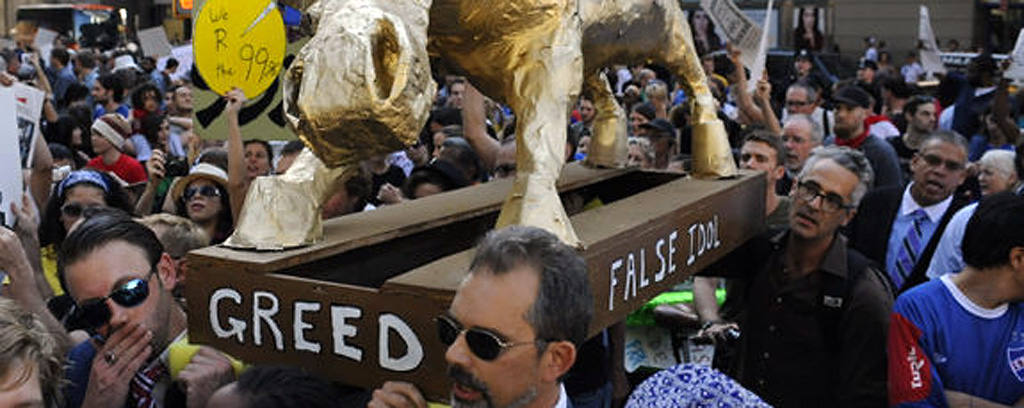In the introduction of your Cultural Resistance Reader from the year 2002 you have drafted different scales of resistance; analyzing the social unit (individual to societal), the result (survival to revolution), and the political self-awareness of cultural production. Do you think your model is still valid and may be applicable to look at new movements (and their successes and disappointments) such as Occupy Wall Street?
Since putting together that reader on Cultural Resistance I’ve done quite a bit of re-thinking about the concept of “resistance”. The question that I think needs to be asked is not “resistance to what?”, as I think this is often self-evident, but rather the much more difficult question of: “resistance for what?”. This means asking ourselves – and this is a question that all of us engaged in the Occupy movement need to ask – if the point of resistance is merely to resist, or is resistance merely a necessary step toward something bigger, namely the transformation of the existing order, that is: revolution?
I worry sometimes that “resistance”, in itself, can end up supporting rather than changing the system. Resistance depends upon the system it is resisting. It’s the old problem of the relationship between the bourgeoisie and the bohemian. What is a bohemian if there is not the bourgeoisie to reject? (And what is the bourgeoisie if they don’t have bohemians to distance themselves from?) The problem with resistance as a permanent strategy is that it also situates the system as a permanent adversary. The result is an eternal and uncomfortable embrace. Not exactly a winning strategy for transformation.
Considering the far-reaching changes in digital media and communication, and the resulting shifts in journalism (e.g. WikiLeaks), culture (e.g. Twitter, Facebook, YouTube, AppStore vs. MegaUpload, etc.), and politics (e.g. online campaigns, Arab Spring, etc.) is it necessary (or possible) to append technology (to which degree it contributes to the initiative, analog/digital, DIY/professional, etc.) as the fourth dimension to your scales of resistance? How deep are technology and culture intertwined?
Technology – particularly communications technology – and culture are deeply intertwined. I think it’s useful to think of technology architecturally. Architecture sets limits on where we can and cannot go; it erects walls as well as passageways. Communications technology does the same, but unlike architectural space, these walls and passageways are not physical, but mental. For example: the printed page. Once literacy became commonplace it helped determine the parameters of our imagination. Reading right to left (or left to right) and moving from the top of the page to the bottom, creates a certain type of thinking: one defined by linearity, cause and effect, etc.
We are now in the midst of another communications revolution and while it is too soon to determine its impact on our culture with any exactitude, I think we can see a few of its – political – effects. Using the web, for example, is the experience of interacting with a multitude of perspectives and the networked distribution of information. This, in turn, conditions the way we think about other things: ideologies and hierarchy, for example. Occupy Wall Street, with its plethora of individualized “demands” made via protester placards, and the horizontal decision making process of the General Assemblies, could be said mimic the experience of using the web. This is the real impact of technology on contemporary protest. Not how technology is used by protestors – e.g. “the Facebook revolution” – but how technological protocols shape protest. The critic Lionel Trilling once called the protests of the 1960s “modernism in the street”; Occupy Wall Street was the “Internet in the streets.”
Have you come across examples of how cultural resistance can go beyond a “resisting against” and transfer political content into real (social, cultural, political) change? What significance do you see in civic engagement through cultural creativity? Who can participate and who not?
This is the big question. Can, and under what conditions, does resistance lead to social change? I think there’s no doubt that the “resistance” we saw in the Arab world beginning in Spring 2011 lead to real social change, most immediately: the downfall of dictators and regime change. But resistance, by itself, was not enough to usher in the new governments that many resisters wanted. Case in point: the rise of the Muslim Brotherhood in Egypt. The Muslim Brotherhood were late to the resistance and never had a major role, but what they did have was a long history of organizing and, consequently, a strong organization. There’s an important lesson here: resistance can be useful in unsettling the old order, but in order to build a new society you also need planning and organizing.
Florian Bettel, Elke Zobl ( 2013): Artistic activism and cultural resistance: An interview with Stephen Duncombe. In: p/art/icipate – Kultur aktiv gestalten # 02 , https://www.p-art-icipate.net/artistic-activism-and-cultural-resistance-an-interview-with-stephen-duncombe/



 Artikel drucken
Artikel drucken Literaturverzeichnis
Literaturverzeichnis